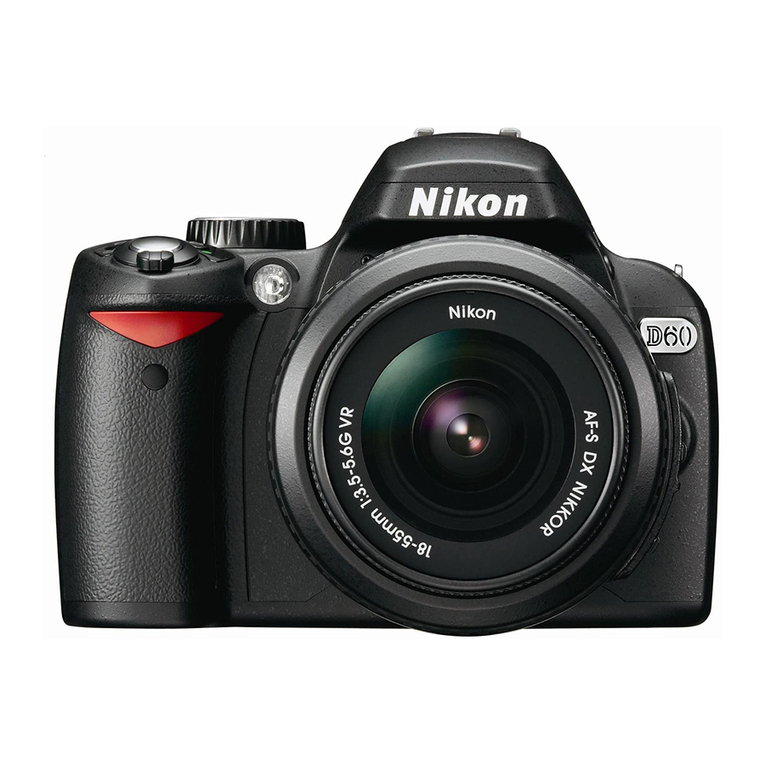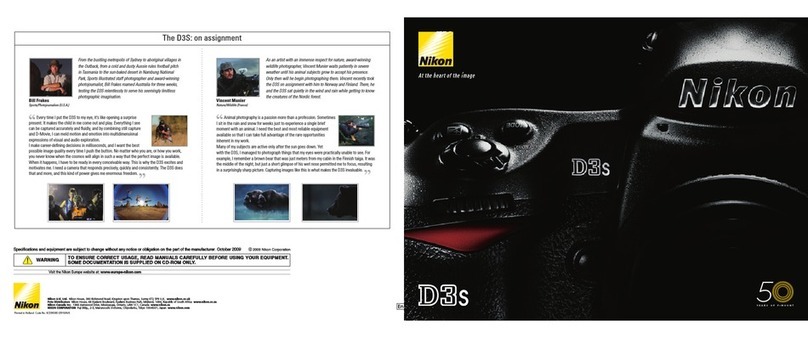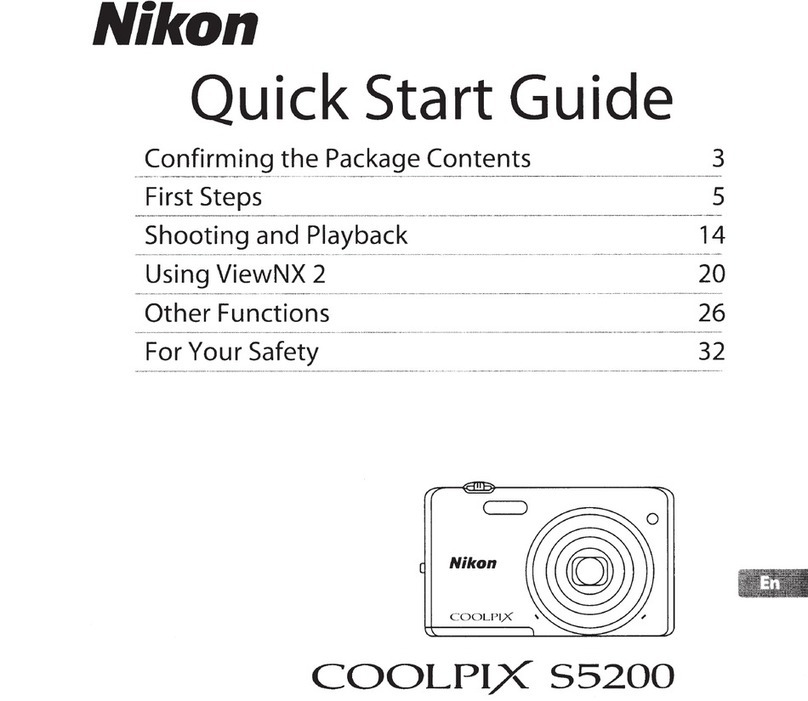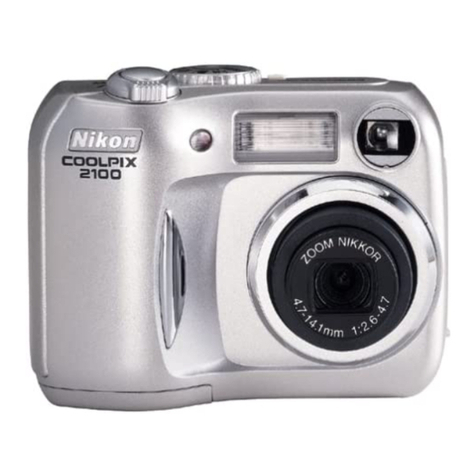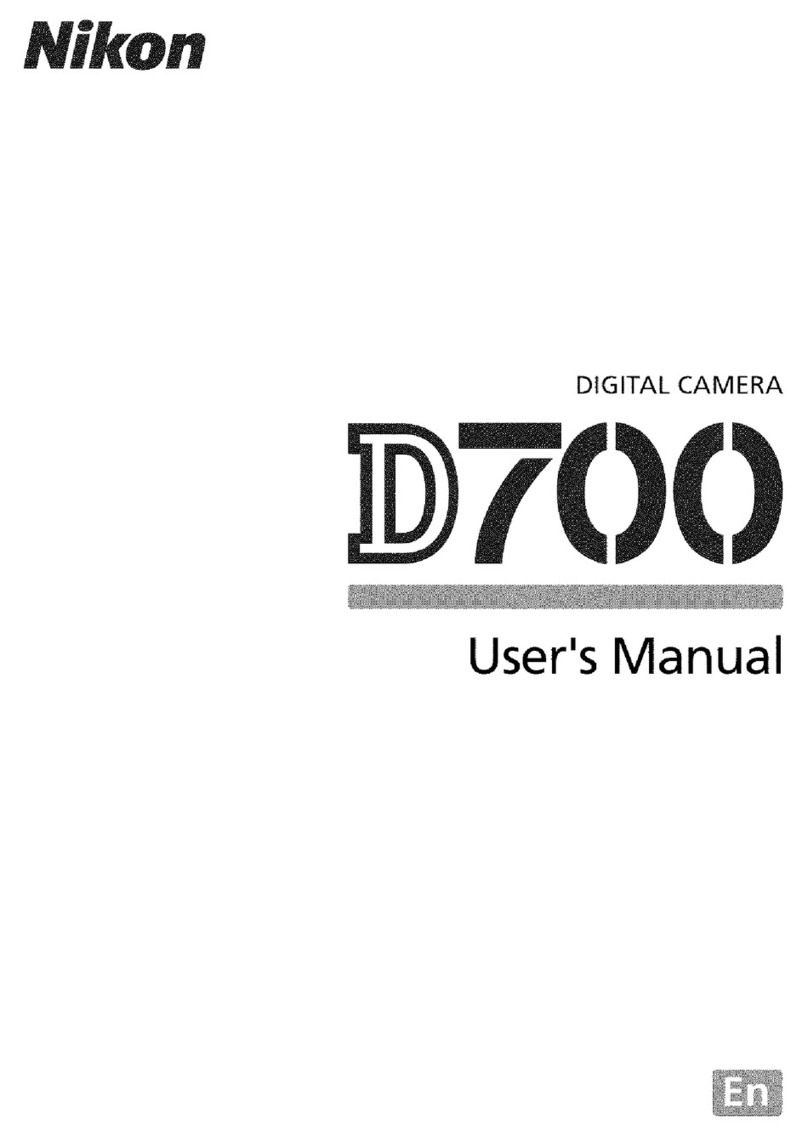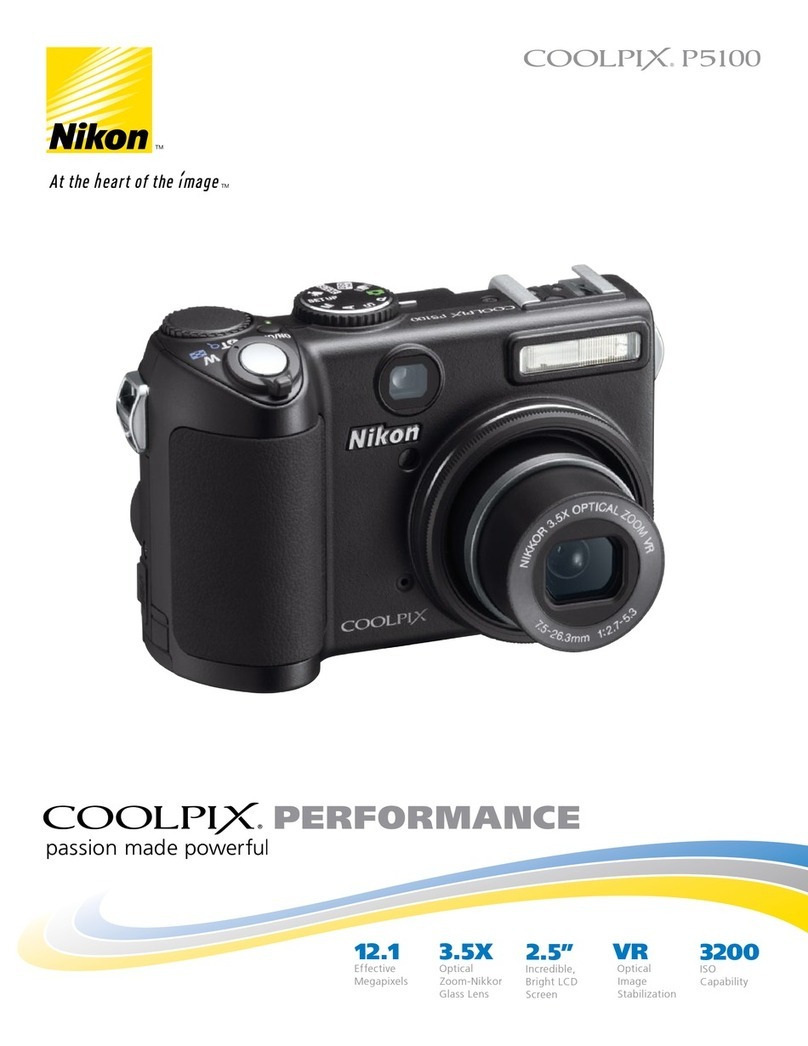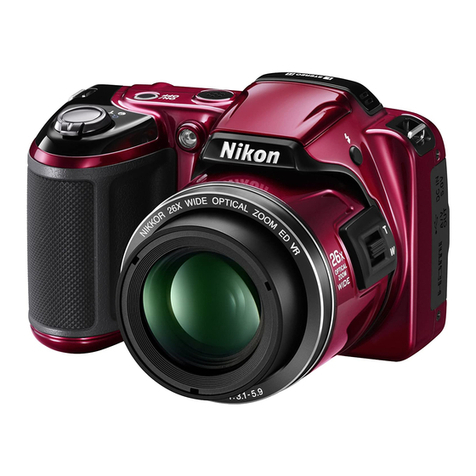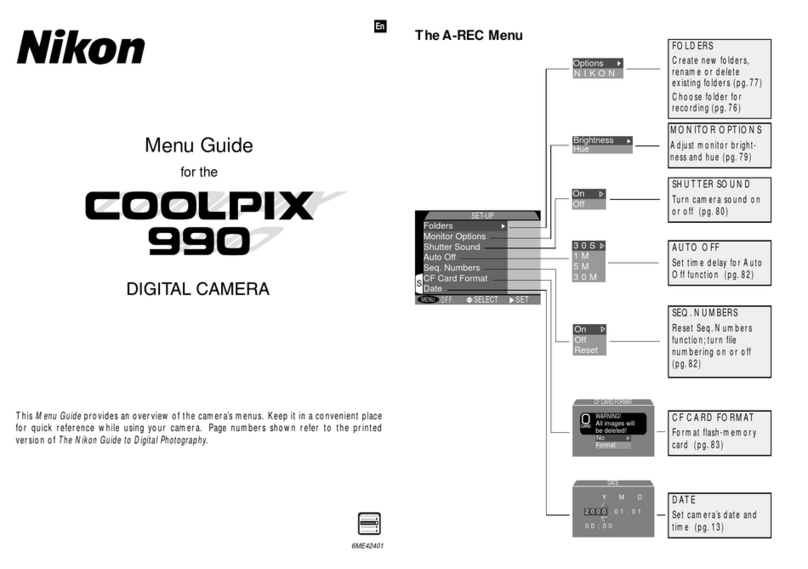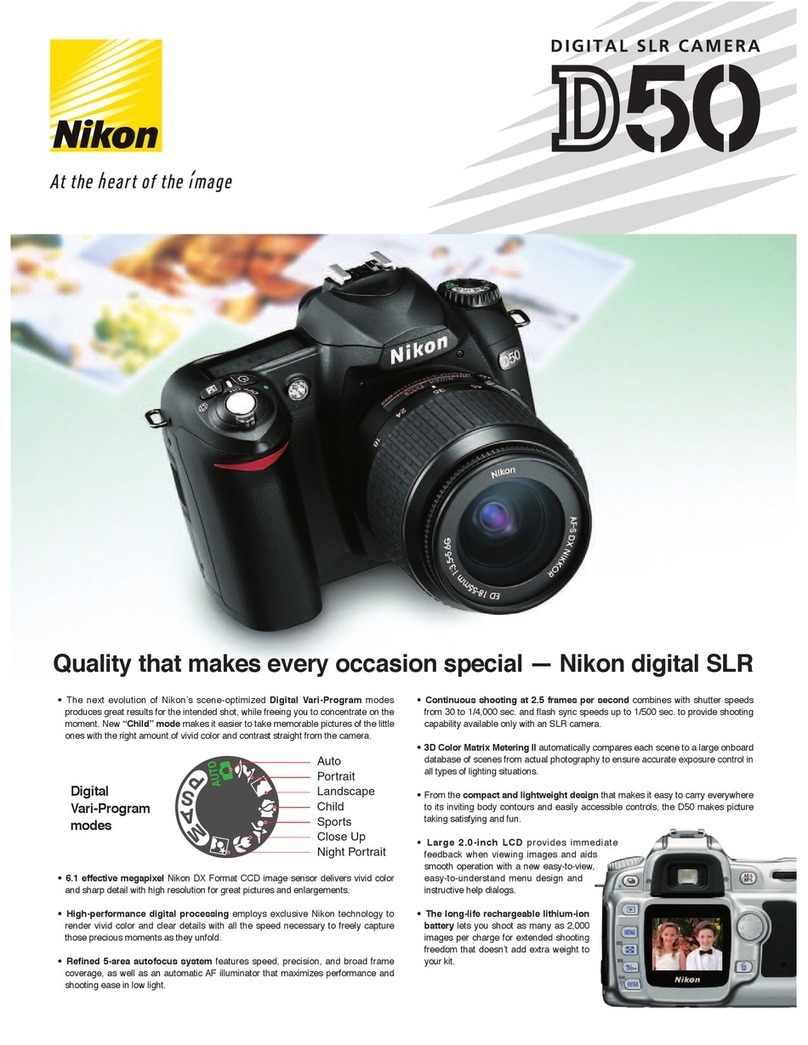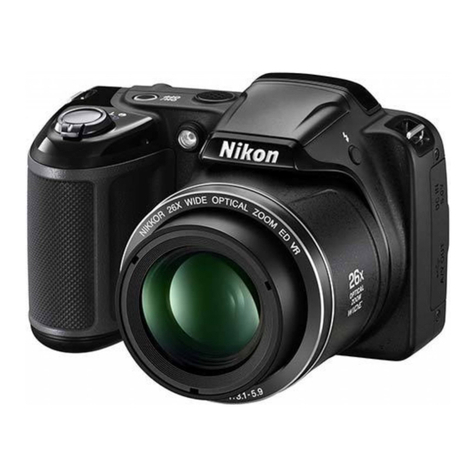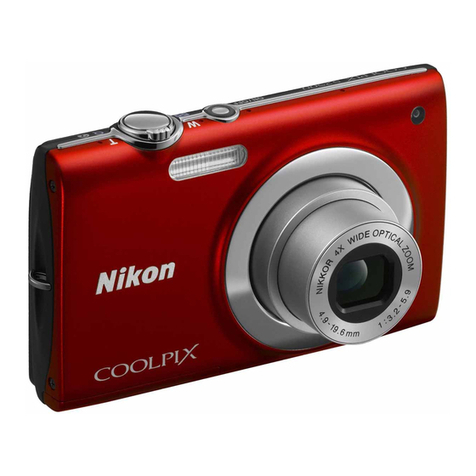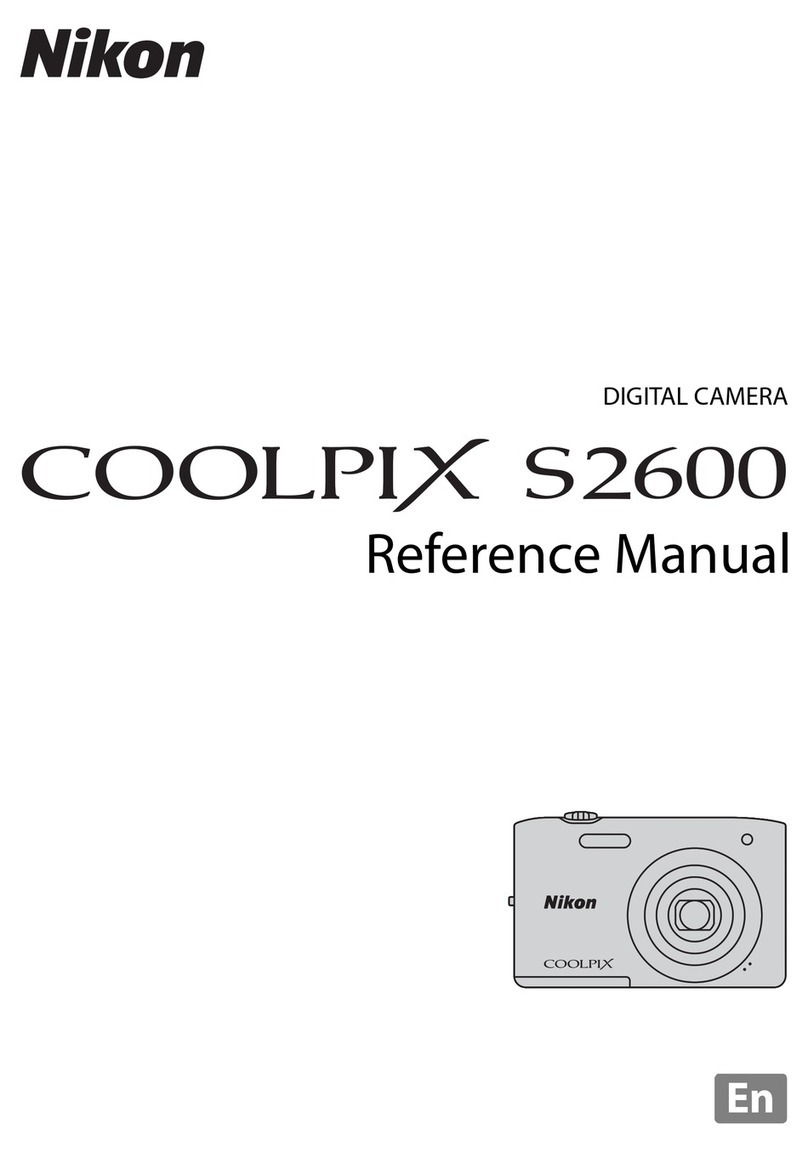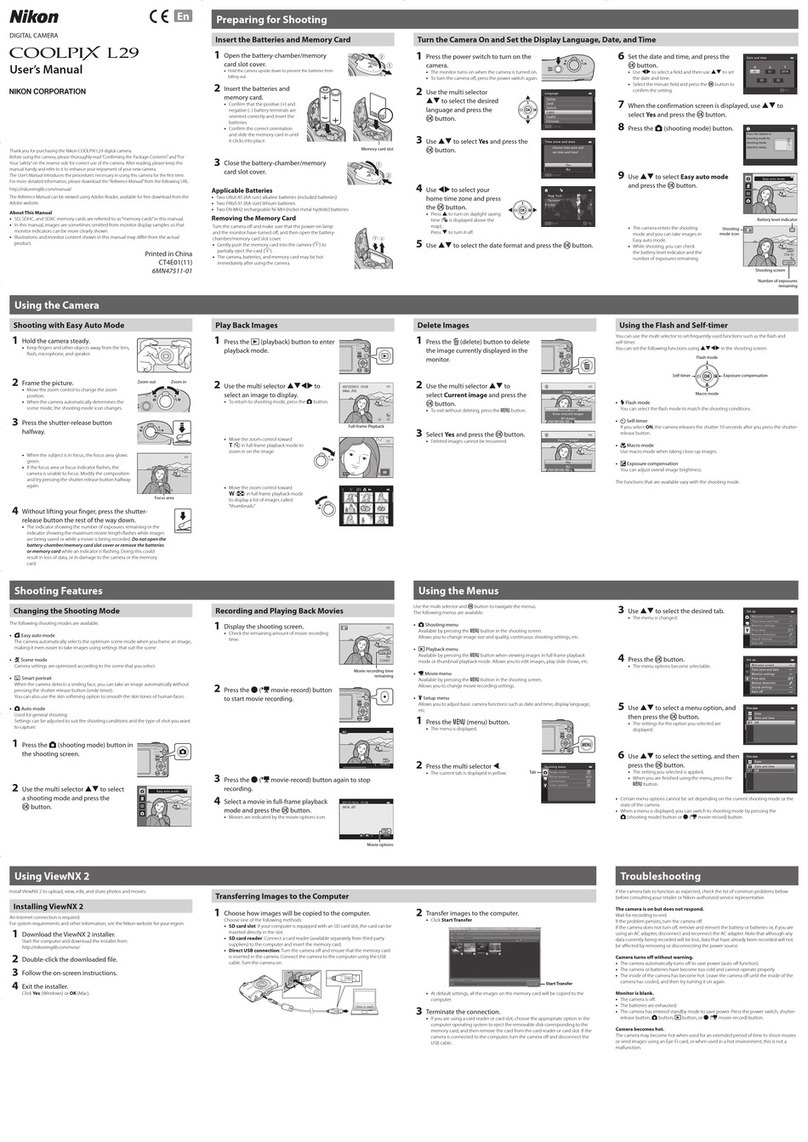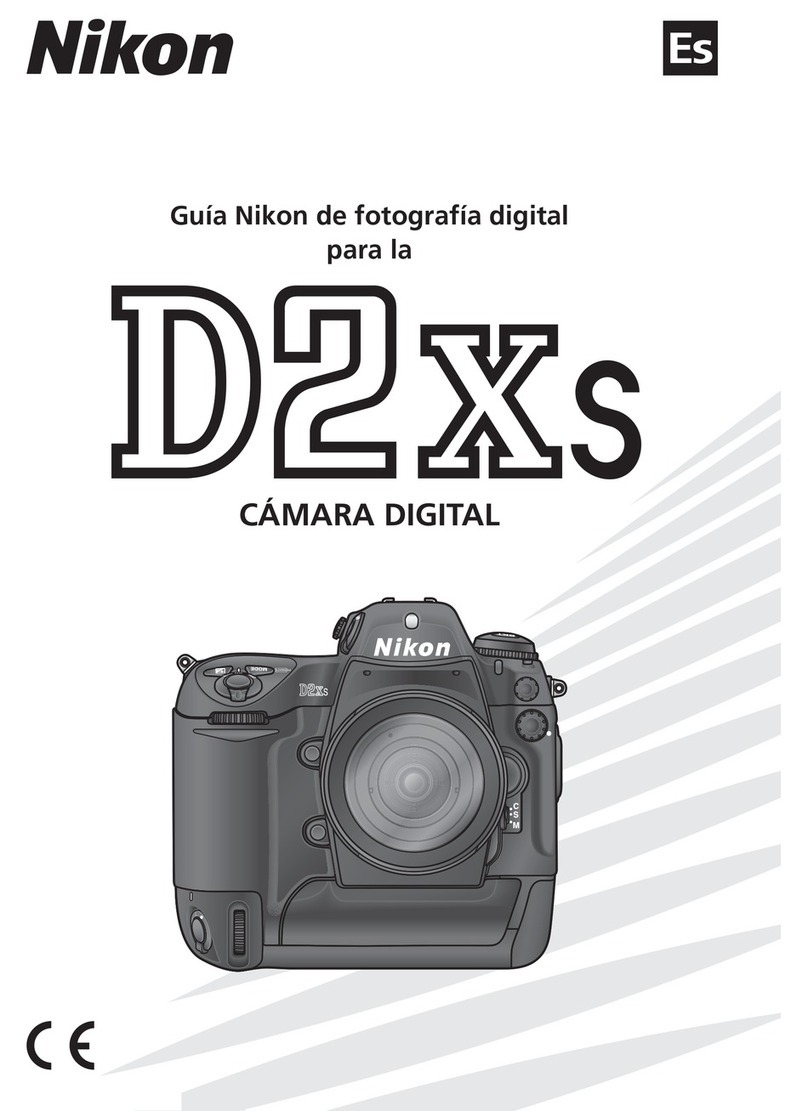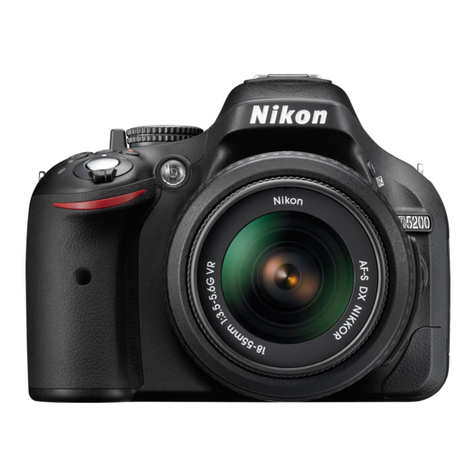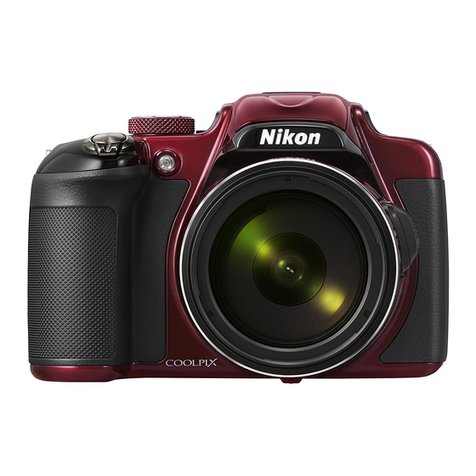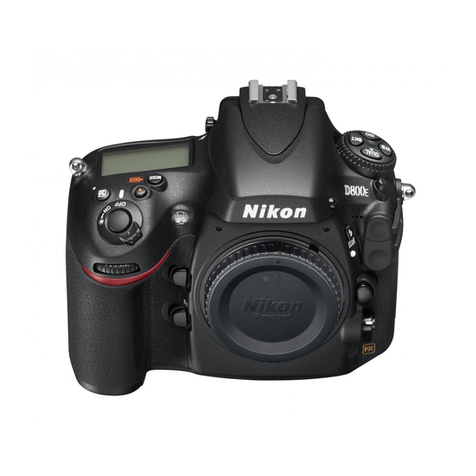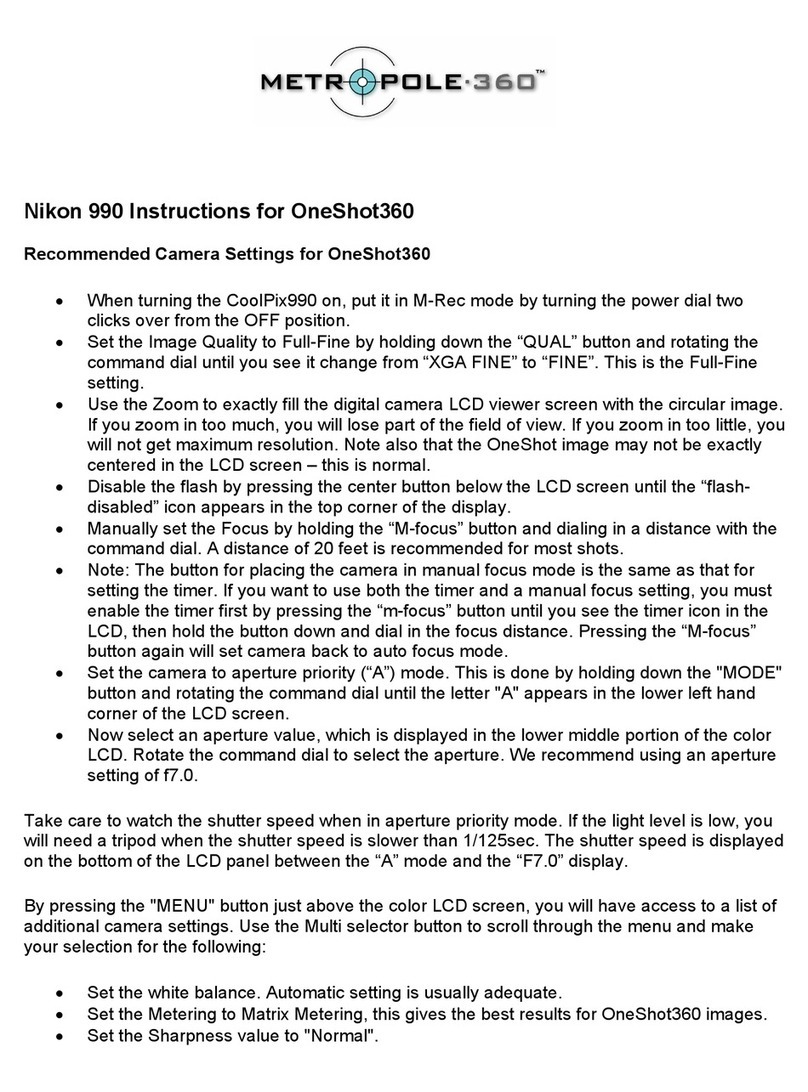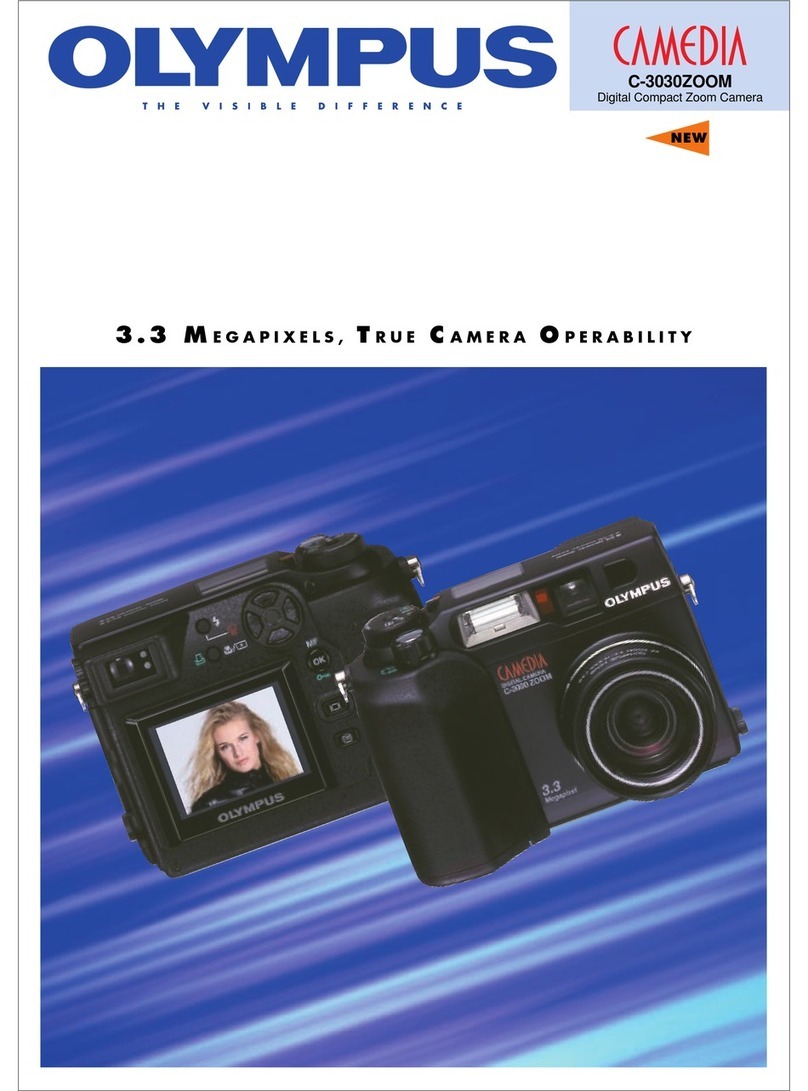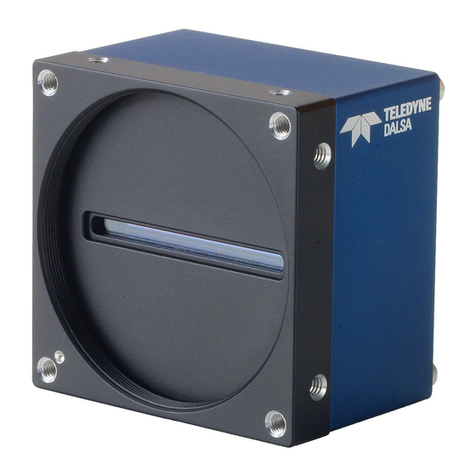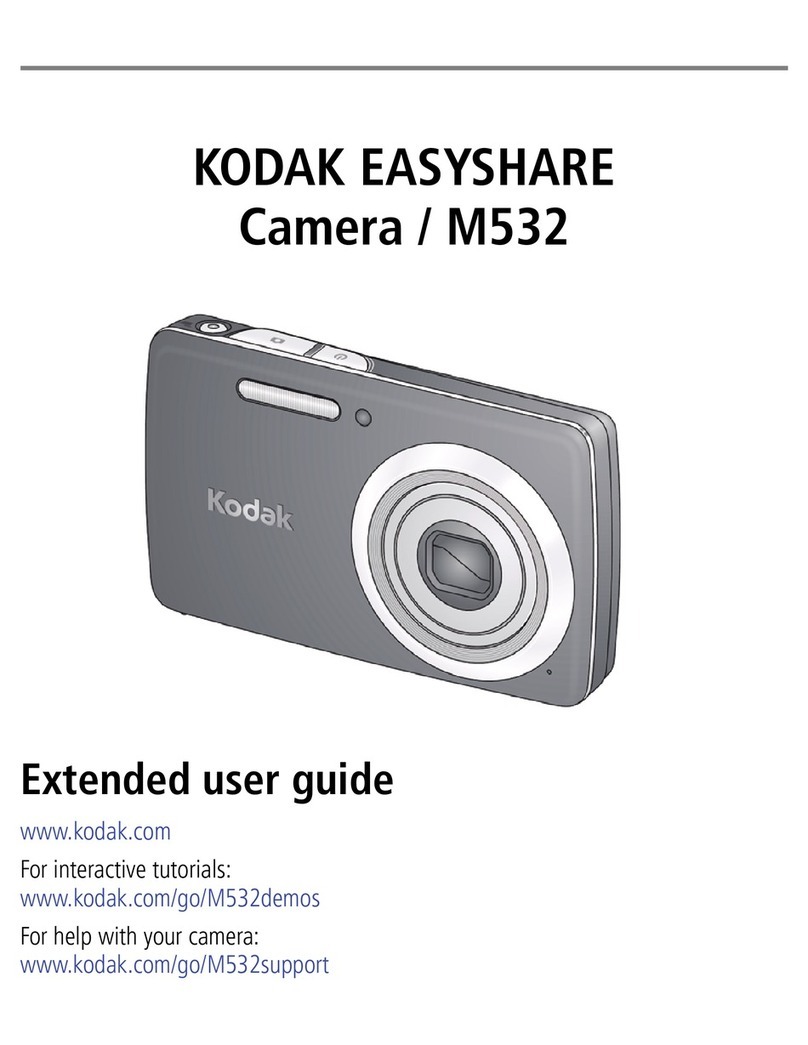iv
Do not drop
The product may malfunction if subjected to
strong shocks or vibration.
Keep dry
This product is not waterproof, and may
malfunction if immersed in water or exposed
to high levels of humidity. Rusting of the
internal mechanism can cause irreparable
damage.
Avoid sudden changes in temperature
Sudden changes in temperature, such as oc-
cur when entering or leaving a heated build-
ing on a cold day, can cause condensation
inside the device. To prevent condensation,
place the device in a carrying case or a plastic
bag before exposing it to sudden changes in
temperature.
Keep away from strong magnetic fields
Do not use or store this device in the vicinity
of equipment that generates strong elec-
tromagnetic radiation or magnetic fields.
Strong static charges or the magnetic fields
produced by equipment such as radio trans-
mitters could interfere with the monitor,
damage data stored on the memory card, or
affect the product’s internal circuitry.
Do not point the lens at strong light sources
for extended periods
Avoid pointing the lens at the sun or other
strong light sources for extended periods
when using or storing the camera. Intense
light may cause deterioration in the image
sensor, producing a white blur effect in
photographs.
Do not touch the shutter curtain
The shutter curtain is extremely thin and
easily damaged. Under no circumstances
should you exert pressure on the curtain,
poke it with cleaning tools, or subject it to
powerful air currents from a blower. These
actions could scratch, deform, or tear the
curtain.
Handle all moving parts with care
Do not apply force to the battery-chamber,
card-slot, or connector covers. These parts
are especially susceptible to damage.
Cleaning
•When cleaning the camera body, use a
blower to remove dust and lint, then wipe
gently with a soft, dry cloth. After using
your camera at the beach or seaside, wipe
off any sand or salt using a cloth lightly
dampened with pure water and then dry
your camera thoroughly. In rare instances,
static electricity produced by a brush or
cloth may cause the LCD displays to light
up or darken. This does not indicate a
malfunction, and the display will shortly
return to normal.
•When cleaning the lens and mirror, re-
member that these elements are easily
damaged. Dust and lint should be gently
removed with a blower. When using an
aerosol blower, keep the can vertical (tilt-
ing the can could result in liquid being
sprayed on the mirror). If you do get a
fingerprint or other stain on the lens, ap-
ply a small amount of lens cleaner to a soft
cloth and wipe the lens carefully.
•See “Technical Notes: Caring for Your
Camera” for information on cleaning the
low-pass filter ( 240).
Storage
•To prevent mold or mildew, store the cam-
era in a dry, well-ventilated area. If you
will not be using the product for long pe-
riods, remove the battery to prevent leak-
age and store the camera in a plastic bag
containing a desiccant. Do not, however,
store the camera case in a plastic bag, as
this may cause the material to deteriorate.
Note that desiccant gradually loses its ca-
pacity to absorb moisture and should be
replaced at regular intervals.
Caring for the Camera and Battery
